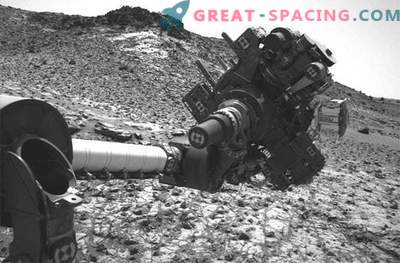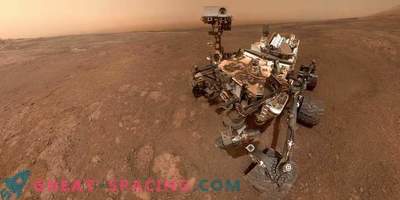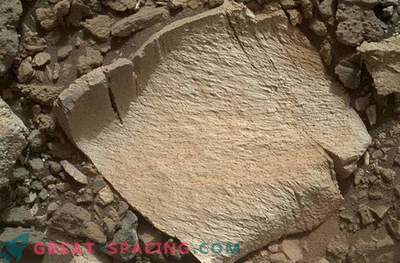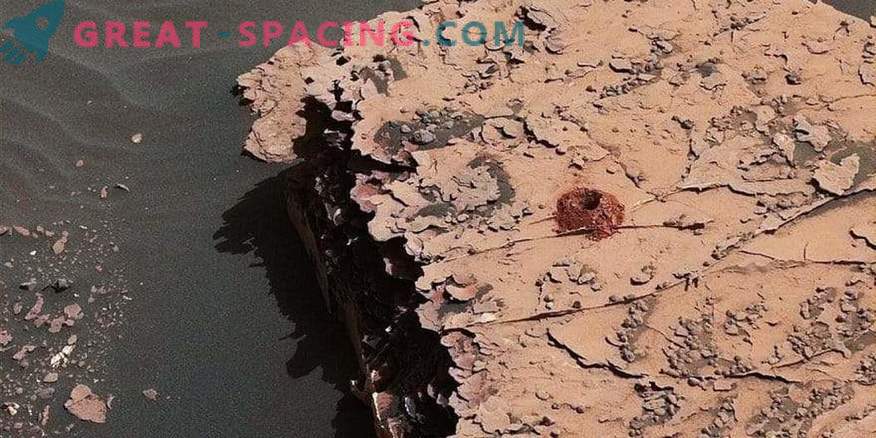
NASA's Curiosity Rover successfully drilled a hole of 5.1 cm in the Duluth target on May 20, 2018. The width of the connector reaches 1.6 cm. This is the first rock sample obtained by the drilling rig since October 2016. Mechanical failure happened in December 2016. Engineers from LRD had to look for a new way to restore this function. The picture was taken by the camera Curiosity (Mastcam) on 2057 sol
NASA engineers working on the mission of the Martian rover Curiosity, conducted a test of new method of drilling rocks and the extraction of samples from them. At the weekend, they were able to conduct a similar operation for the first time since stopping over a year ago.
Curiosity used a drill and punched a 50 mm hole in the Duluth target. NASA's Jet Propulsion Laboratory (Pasadena, California) tested the drilling technology as the mechanical problem brought the device out of operation in December 2016. The new method keeps the drill bit from the two stabilizing pillars that were previously used to strengthen the drill against the Martian rocks. This allows the rover to drill using the power of its robotic arm.
Drilling is an important part of Curiosity’s exploration of the Red Planet. Inside the rover are two laboratories capable of conducting chemical and mineralogical analysis of rock and soil samples. The material is taken from the Gale crater, which the rover has been exploring since 2012.
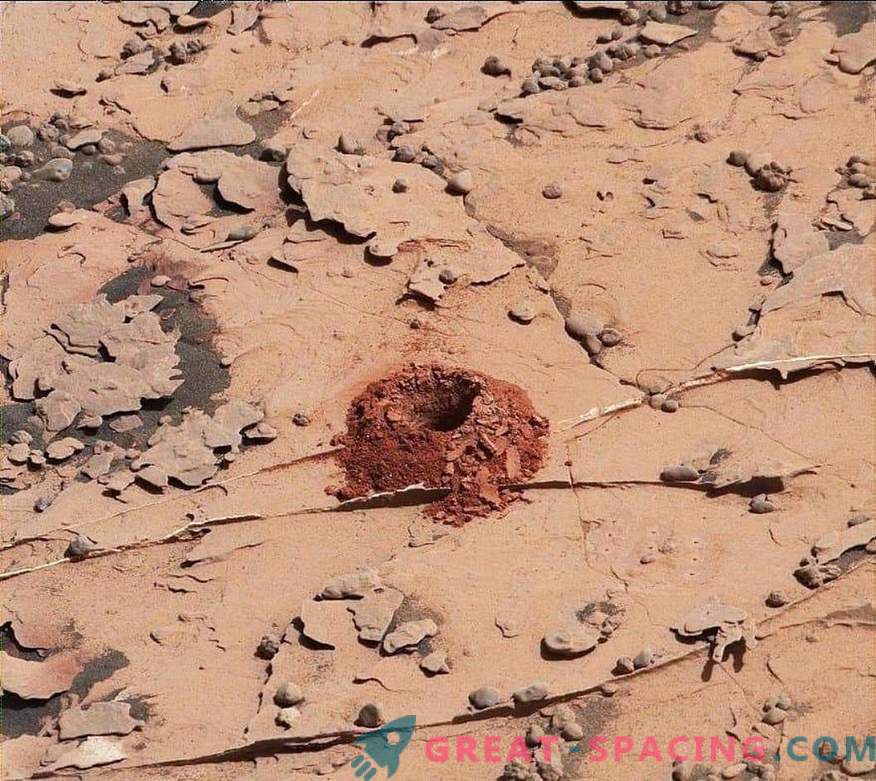
A close-up shot of a hole with a depth of 50 mm and a diameter of 1.6 cm. The image was taken by the Mastcam camera of the rover in 2057 sol. He was made balanced and contrasted. May 20, 2018 Curiosity drilled a hole in a Duluth target
The rover science team was trying to get the drill back to work before Curiosity leaves its current position near the ridge of Vera Rubin. The drilling was successful, but this does not mean that the work is over. Above the new method worked more than a year. With each new test, scientists carefully study the data to find ways to improve, to return to the repeated process.
The next step is to deliver the rock sample from the drill bit to two rover laboratories. By capturing a sufficient amount of powder inside the drill, engineers use Curiosity cameras to estimate how much is leaking back when the drill starts. A percussion mechanism is also used to extract the powder.





